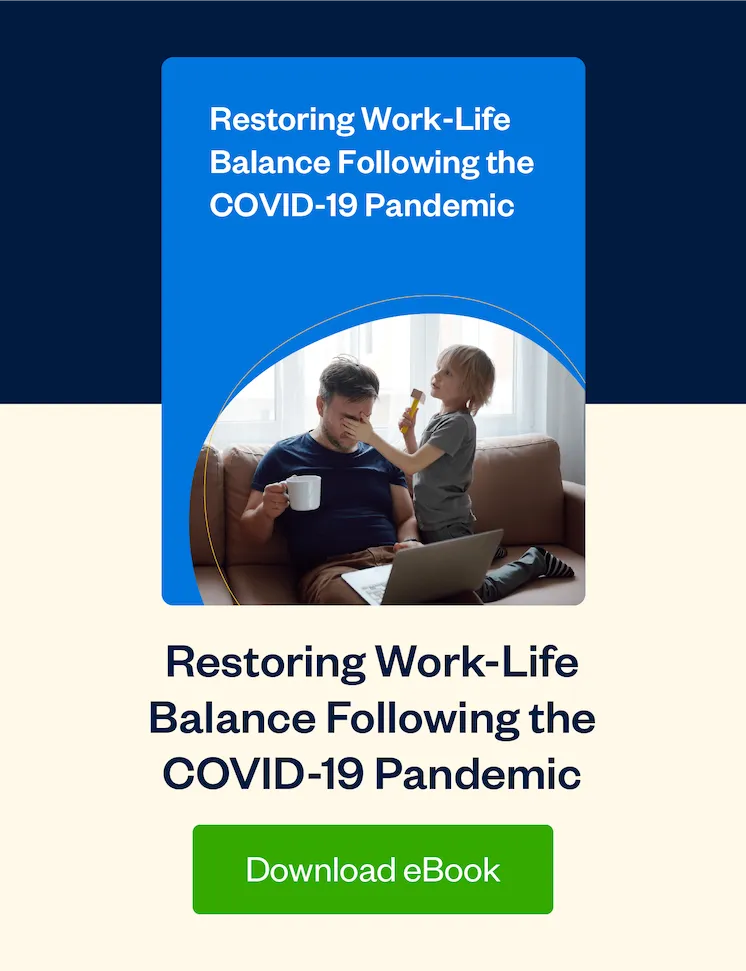When you invest in your employees, they'll give you a more profitable business back.

What’s a business without its employees? As the owner, you might be the driver, steering the car where it needs to go. But the people you employ are the engine—they do the work that gets your business from point A to B and beyond. To drive fast and true, you need to invest in your employees.
Your team directly impacts:
- The relationships you have with your clients
- The quality of work you deliver
- Your ability to produce work at the pace you need to
Like any other initiative, investing in your team requires time, energy, resources, and thoughtfulness. Applying these efforts may feel counterintuitive or risky. But when you invest in your employees, you’re investing in the success of your company too.
So, if you’re ready to increase employee productivity, strengthen your company culture, and grow your revenue, here are some recommendations on the best investments you can make.
Table of Contents
What It Means to Invest in Your Employees—and Why You Should
Investing in employees means spending both time and money to ensure your staff feels valued and informed. It can be as simple as a thank-you card for a job well done, or as complex as establishing a corporate training and education program.
Your goal when investing in your team is to increase their engagement. Engaged employees routinely exceed expectations because they feel like they’re contributing value to something greater than themselves.
Here’s what making that investment in employee engagement can lead to.
Achieving Greater Profitability
Cultivating an environment designed to engage employees has a proven impact on company performance. A 2020 Gallup report indicates that companies with higher employee engagement scores typically outperform companies with lower scores, even during times of economic difficulty.
Surpassing Current Productivity
Does an engaged workforce work harder? A survey conducted by Indeed shows that 52% of employees experience burnout—a feeling that can lead to compromised health and reduced productivity, and one that has gotten worse for 67% of respondents during the COVID-19 pandemic.
Meanwhile, research from Dale Carnegie found that engaged employees outperform their less engaged counterparts by as much as 200%.
Reducing Employee Turnover Costs
Happy employees typically stay at their jobs longer. According to some estimates, replacing a single employee (factoring in recruiting, onboarding, and training costs) can cost as much as 50% of that employee’s salary.
When you factor in additional considerations such as their role, seniority, and your company’s industry, that cost can balloon to 200%, according to PeopleKeep.
Click here for a free Webinar: How to Stay Compliant While Growing Your Remote Team
The Risk of Failing to Invest in Your Employees
Failing to invest in your employees doesn’t mean your business will fall apart. However, it can add additional stress and costs to your organization. Here’s what you’re in for if you don’t make that employee investment.
Decreased Client Confidence
When employees leave, they take the relationships they’ve built with your clients with them. Rebuilding these relationships takes time and can lead to mistakes that erode client confidence.
A Talent Exodus
You want to hire and retain the best people for your company. Disengaged employees are more likely to leave, taking institutional knowledge with them. And you’ll incur additional costs to replace them.
Engaged employees? Not only are they more likely to stay, but they’ll help recruit other top talent as well.
Increased Hiring and Onboarding Costs
In addition to recruiting and training efforts, there are indirect costs associated with employee turnover. For example, teammates pick up the slack when an employee leaves. This can lead to greater stress, longer work days, and eventual unhappiness if their efforts aren’t rewarded or recognized.
Investing in Your Employees: Where and When to Spend Money
There are a number of ways to spend money on employee engagement, and each of your employees will respond differently to them. Expect some trial and error as you figure out what works best for your team.
Here are the crucial starting points to focus your funds on as you build out your process.
Competitive Compensation
Dissatisfaction and voluntary turnover is often driven by employees feeling under-compensated for their efforts. While you might not be able to pay the highest rates in your area, strive to keep salaries competitive. Make sure your company does its due diligence in researching salary ranges for the jobs and roles you’re hiring for.
Recognition of Employee Contributions
Employees want to be recognized for the work they do. A gift card to their favorite restaurant or an afternoon off can show them you value their wins (like completing a client project under budget). Monthly achievement awards allow you to showcase the work of your best employees, while also motivating those who want a chance at recognition.
For long-term contributions and successes, raises and bonuses go a long way toward retaining your top performers.
Competitive Health and Benefits Packages
Providing a comprehensive health and benefits package can reduce illness-related absences from your team, and give them confidence that they’ll be taken care of no matter what. A competitive benefits package, such as one that includes a yearly stipend for personal and professional development, will also help you recruit and retain top talent.
An enlightening survey from Marathon Health showed that 80% of employees believe health insurance coverage is the most important benefit their employer offers. But for 35% of respondents, it’s also the work benefits that need the most improvement.
A Productive Workspace
If you want to motivate employees to do their best work, then it’s important that they have the proper environment to do so.
Employees are constantly bombarded with distractions that reduce their productivity. Mopria Alliance found that employees spend, on average, about 11.1 hours of their work week in meetings, but nearly half of that time (46%) was unproductive.
Carving out time each day for your employees to work without distractions offers huge benefits for your company’s productivity and your employees’ well-being. And for your remote employees, providing them with a work-from-home stipend to create a workspace they’re comfortable in shows you care about more than just your company’s bottom line.
Celebrated Milestones
Employees value empathetic leaders who pay attention, not just to the big stuff but to the little things as well. Milestones like birthdays, work anniversaries, and project successes should be recognized and celebrated. There are many ways to do so, including:
- Team gatherings on a lunch or coffee break
- Birthday and anniversary cards
- Company-wide emails recognizing employee contributions
Team Building and Events
Team-building events like group lunches, parties, and outings can help your team get to know one another and build morale.
To make the most of these opportunities, ask your team for feedback on the kind of events they’d want to participate in. After all, something that may seem as harmless as monthly happy hours at the local bar can alienate employees who don’t drink alcohol.
Failing to take your employees’ interests to heart could cause even the most well-intentioned plans to backfire.
Investing in Your Employees: Where and When to Spend Time
Engaging your employees doesn’t always mean you need to spend money, though. The time your company invests in your team is equally important. Here’s how to contribute to a healthy culture without a large cash investment.
Give Opportunities to Do Great Work
You might not always be able to pay the highest salary or give the biggest bonuses. But if you’re a small- to medium-sized company, what you can offer to employees is a chance to do work that inspires and invigorates them.
Make sure your best team members have the opportunity to work on projects that allow them to develop their technical skills, project management skills, or both.
Develop a Company Buddy System
A welcoming onboarding program is critical for your company. New employees often feel overwhelmed: They want to prove their worth right away but are still learning everything from scratch. Assigning all new hires an experienced buddy can help them settle in confidently.
Establish In-House Training Programs
Great employees want to learn new skills and invest in their professional development. Beyond paying for them to take courses or get certified, you can offer in-house employee development sessions geared toward their interests and career path. For example, you may consider a leadership program that prepares mid-career employees to take the next step.
Emphasize Work-Life Balance
Even when employees love their jobs, they still need time away from the office to prevent burnout. Alongside better benefits, you can also offer flexible work hours, work-from-home options, and increased vacation time.
Remote and flexible work arrangements, in particular, continue to be popular with employees in the wake of the pandemic. GoodHire’s 2021 State of Remote Work survey revealed that only a third of U.S. employees prefer in-person work environments; 68% of respondents want to work from home instead.
Establish Believable Company Values
Clearly-defined company values, backed by a company mission statement, can help employees find purpose in their work. Even better? Engage your employees in creating your company’s values and acting on them. Some ways to do so include:
- Making hiring decisions with your company values as a guide
- Linking each team member’s tasks and responsibilities back to company values
- Giving your employees a say in the company’s decision-making process
Offer Productive Feedback
While recognition bonuses and the occasional “great job” are important, regular constructive feedback is important in helping employees grow. Feedback can be delivered informally—coming as situations arise—or in a more structured manner, such as in regular one-on-ones and annual reviews.
Receiving great feedback, both positive and constructive, will help your staff to fully engage with their work. Gallup showed that employees who receive daily feedback from their supervisor were 3 times more likely to be engaged than those who only received feedback once a year or less.
Conduct Exit Interviews
Exit interviews are a valuable opportunity to learn about an employee’s experience with your company and why they’re leaving. The insights you gain can help you minimize future employee departures and the associated costs.
Of course, it’s not uncommon for employees to hold information back if they’re uncertain about how it will be received. Consider employing strategies to encourage honesty and constructive criticism—such as pairing the interviewee with a colleague they trust—and following a standardized interview format for a better chance of identifying broader trends in your company.
The Business Owner’s Role When Investing in Employee Engagement
Every employee is different. A great business owner won’t take a cookie-cutter approach when investing in their staff. They’ll show their appreciation and support in many different ways and observe how their employees respond—both individually and as a team.
For example, not every employee is comfortable with being recognized in front of others, and some won’t feel comfortable participating in team-building activities. Other team members may not be able to attend gatherings outside of work, whether due to school, family responsibilities, or personal matters.
Be sure to take note of what works for your employees and offer an individualized approach wherever necessary.
Finally, remember that investing in your employees isn’t a one-time task you cross off your checklist. It’s an ongoing process that involves regular check-ins to ensure morale remains high and your teams feel supported—especially as your business grows.
Start Investing in Employee Engagement for Long-Term Success
Your clients and staff are equally important to the success of your organization. By investing in your employees, you can be confident that they’re engaged and productive, contributing to great customer service, and improving your bottom line.
Webinar: How to Stay Compliant While Growing Your Remote Team
This post was updated in February 2023.

Written by Feli Oliveros, Freelance Contributor
Posted on February 10, 2023

 How to Be a Thought Leader and Win More Business
How to Be a Thought Leader and Win More Business Is Outsourcing Work Right for Your Growing Business?
Is Outsourcing Work Right for Your Growing Business? Understand Revenue Streams to Grow and Future Proof Your Business
Understand Revenue Streams to Grow and Future Proof Your Business





